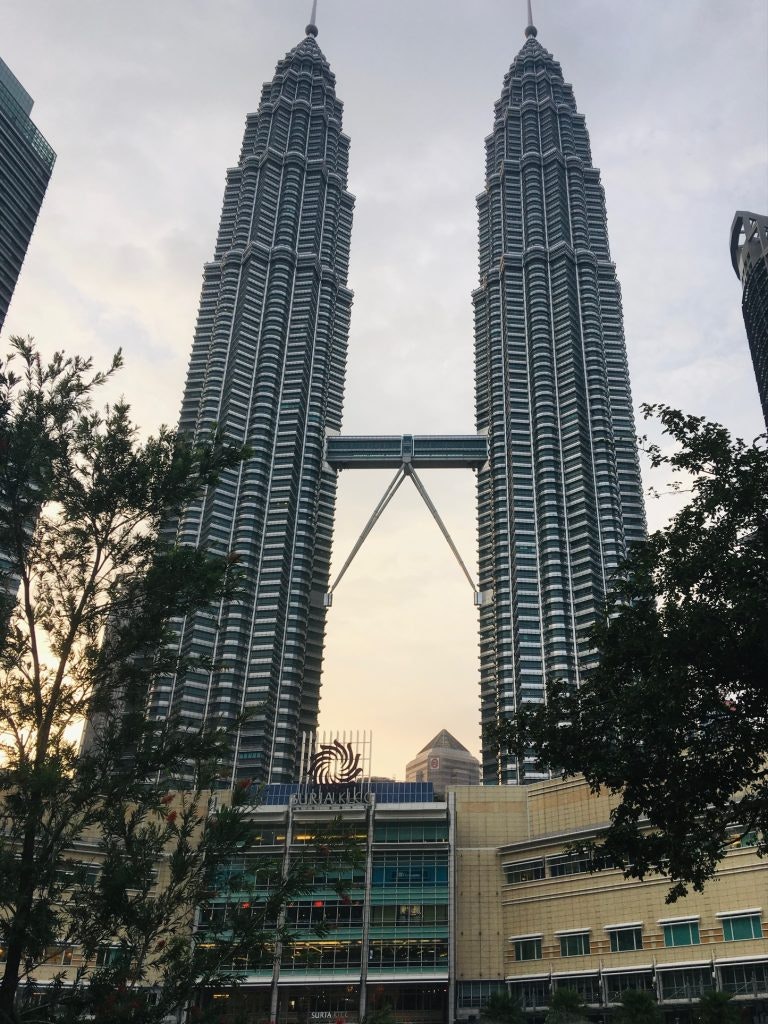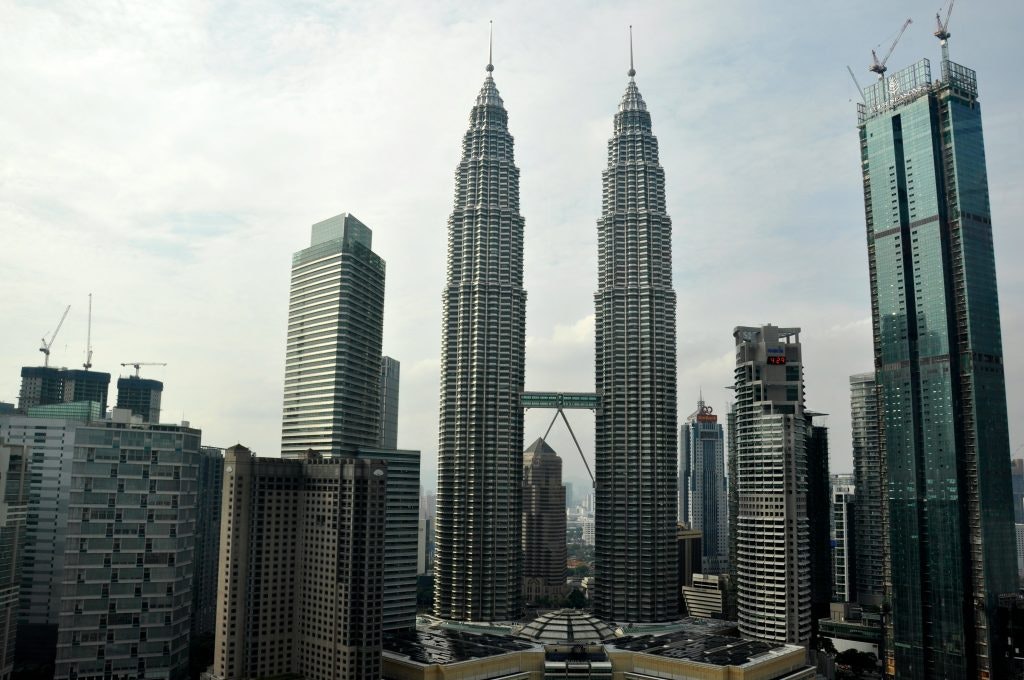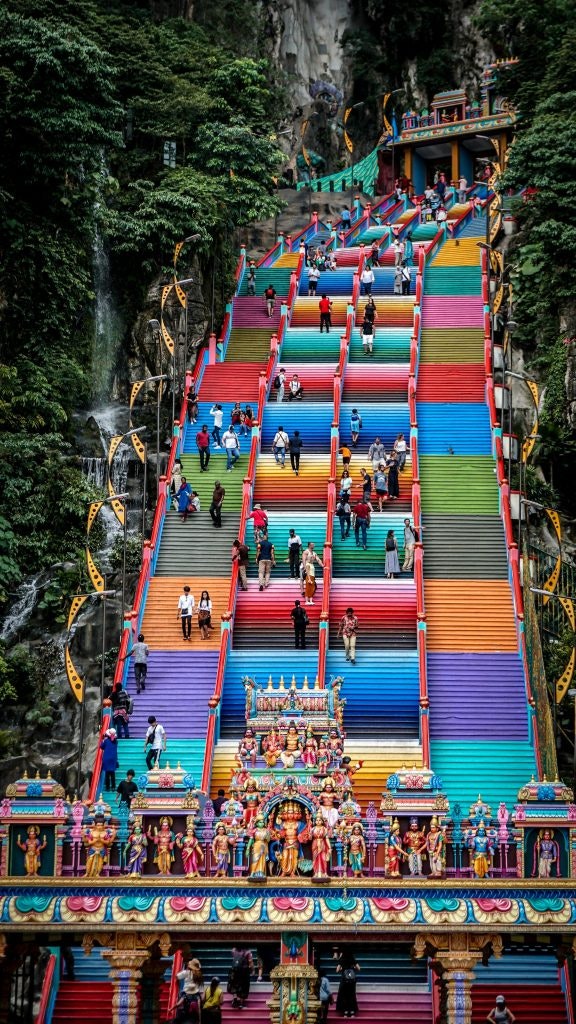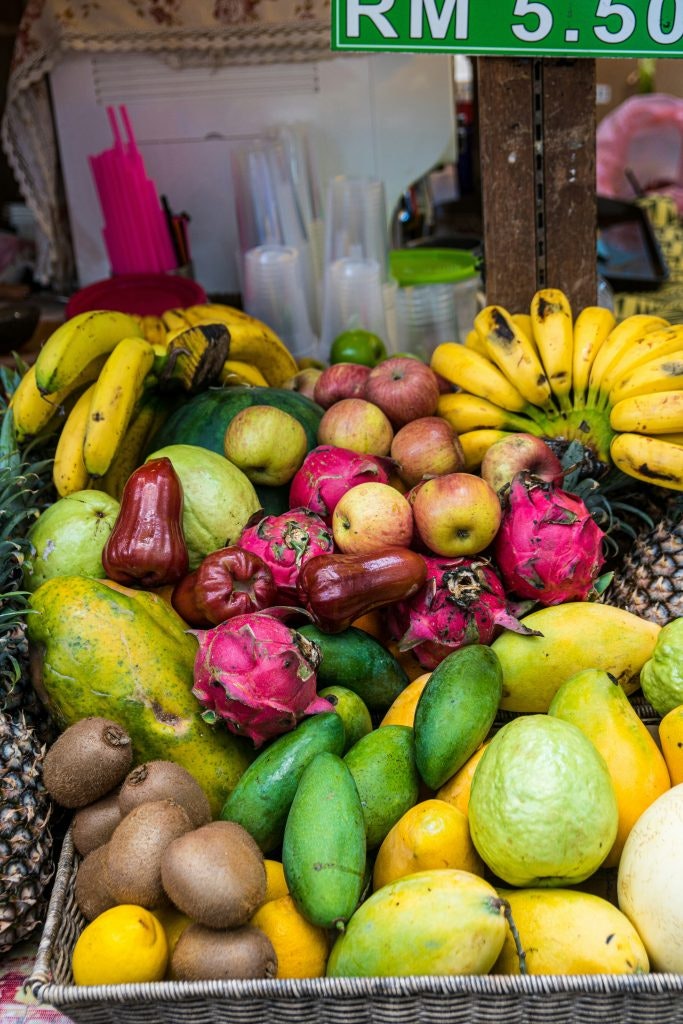







Kuala Lumpur is the capital of Malaysia and the country’s largest city. It is known for its mix of cultures, languages, and religions, with large communities of Malay, Chinese, and Indian people. The city is home to important sites such as the Petronas Towers, the Batu Caves, and the Kuala Lumpur Tower.
Kuala Lumpur started as a tin mining town in the 1800s and has since become a major center for business, government, and transportation. The city also has one of the tallest flagpoles in the world and a public transit system used by thousands each day. Visitors can explore street food stalls, markets, and neighborhoods that reflect many parts of Malaysian society.
| Key Facts About Kuala Lumpur | Details |
| Population(2025) | 9,000,280 |
| Official Language | Malay |
| Currency | the Malaysian Ringgit |
| Main Religion | Islam |
| Area | 94 sq mi(243 km2) |
| Continent | Southeast Asia |
Read on to learn more about Kuala Lumpur, Malaysia’s capital and the 6th most-visited city in the world in 2024!


The Petronas Towers in Kuala Lumpur.
The Petronas Towers, the world’s tallest twin buildings, are a must-see in Kuala Lumpur. While they already looked cool in the movie Entrapment, they’re even more impressive in person.
Designed by Argentine architect César Pelli, the towers stand at 1,483 feet (452 meters) and were the world’s tallest buildings from 1998 to 2004 before being overtaken by Taipei 101. Today, the Burj Khalifa in Dubai holds the record for the tallest building at 2,717 feet (828 meters).
Though the Petronas Towers no longer hold the overall height record, they still stand out as the tallest twin towers featuring one of the highest double-decker sky bridge in the world.
For comparison here’s a list of the world’s tallest twin towers:
| Name | Country | Height (max.) |
|---|---|---|
| Petronas Twin Towers | Malaysia | 1,483 ft (452 m) |
| JW Marriott Marquis Dubai | United Arab Emirates | 1,165 ft (355 m) |
| Emirates Towers | United Arab Emirates | 1,161 ft (354 m) |
| Huaguoyuan Towers | China | 1,099 ft (335 m) |
| One Za’abeel | United Arab Emirates | 1,083 ft (330 m) |
| Hangzhou Greenland Center | China | 1,017 ft (310 m) |
| City of Capitals | Russia | 988 ft (301 m) |
| Lusail Plaza Towers | Qatar | 988 ft (301 m) |
| Yachthouse Residence Club | Brazil | 968 ft (295 m) |
| The Astaka | Malaysia | 915 ft (278.8 m) |
| The Cullinan | China | 886 ft (270 m) |
In 1998, Kuala Lumpur became the first Asian city to host the Commonwealth Games in its 68-year history.
The Commonwealth Games, held every four years, brings together athletes from countries that were once part of the British Empire, now linked by shared history and the English language. Along with Malaysia, participants include nations like India, Pakistan, Tanzania, Bangladesh, Australia, Canada and many others.
Kuala Lumpur was officially granted city status in 1972 and became a Federal Territory in 1974, making 2024 its 50th anniversary as a Federal Territory. But the city’s history goes way back. Here’s a quick recap:

Kuala Lumpur’s modern skyline.
The Malaysian government isn’t based in Kuala Lumpur, even though it’s the country’s capital city and home to the royal palace, Istana Negara. Yet, the seat of the Malaysian Federal Government is located around 15.5 (25 kilometers) away in Putrajaya. In 1999, the government moved to Putrajaya to ease overcrowding in KL. The Prime Minister now works from the Perdana Putra, a striking building with a mint-green dome.

A colorful staircase leads up to the Batu Caves near Kuala Lumpur.
The Batu Caves, just a short train ride away from Kuala Lumpur, are one of the biggest tourist attractions featuring three limestone caves: the Cathedral Cave, the Museum Cave and the Art Gallery Cave. Some of these caves are over 400 million years old and house Hindu temples, mythological paintings and statues.
For other religious landmarks, the National Mosque of Malaysia in KL is worth a visit, along with many other colorful mosques, temples and shrines throughout the city.
Extra fact: The majority of Malaysians are Muslims, but there are also significant communities practicing Buddhism, Christianity and Hinduism.
Kuala Lumpur is a melting pot of cultures, languages and religions. This diversity is reflected in:

A street in Kuala Lumpur’s Chinatown with colorful shops and street food.
Kuala Lumpur translates to “muddy confluence” in Malay, the official language of Malaysia. The name derives from Kuala Lumpur’s location at the meeting point of the two rivers – Klang river and Gombak river. This geographical feature has historically caused frequent flooding during heavy rains.
Despite its urban setting, Kuala Lumpur is a city of parks, including the Kuala Lumpur Butterfly Park and the Kuala Lumpur City Centre Park, rivaling the beauty of Malaysia’s Kinabalu and Gunung Mulu National Parks in Borneo.
Here’s an overview of five top parks in Kuala Lumpur, starting with my personal favorite from my trip:

Canopy walk surrounded by green trees at Kuala Lumpur Forest Eco Park.

Kuala Lumpur’s markets offer a variety of fresh fruits like bananas, kiwis, apples, dragon fruits and mangos.
Kuala Lumpur is a shopper’s paradise with plenty of malls, shopping centers and boutique stores. Here’s where to go:
In 2014, Kuala Lumpur was named one of the New 7 Wonders Cities, a title determined by a global online poll. The New 7 Wonders Foundation started the poll in 2007, initially including over 1,200 cities from 220 countries. A panel, led by former UNESCO Director-General Federico Mayor Zaragoza, narrowed the list to 28 cities. After public voting, Kuala Lumpur joined Beirut, Doha, Durban, Havana, La Paz and Vigan as winners.
It’s no wonder Kuala Lumpur is one of the most visited cities in the world!
💡 Want more trivia?
Browse all Fun Facts articles.